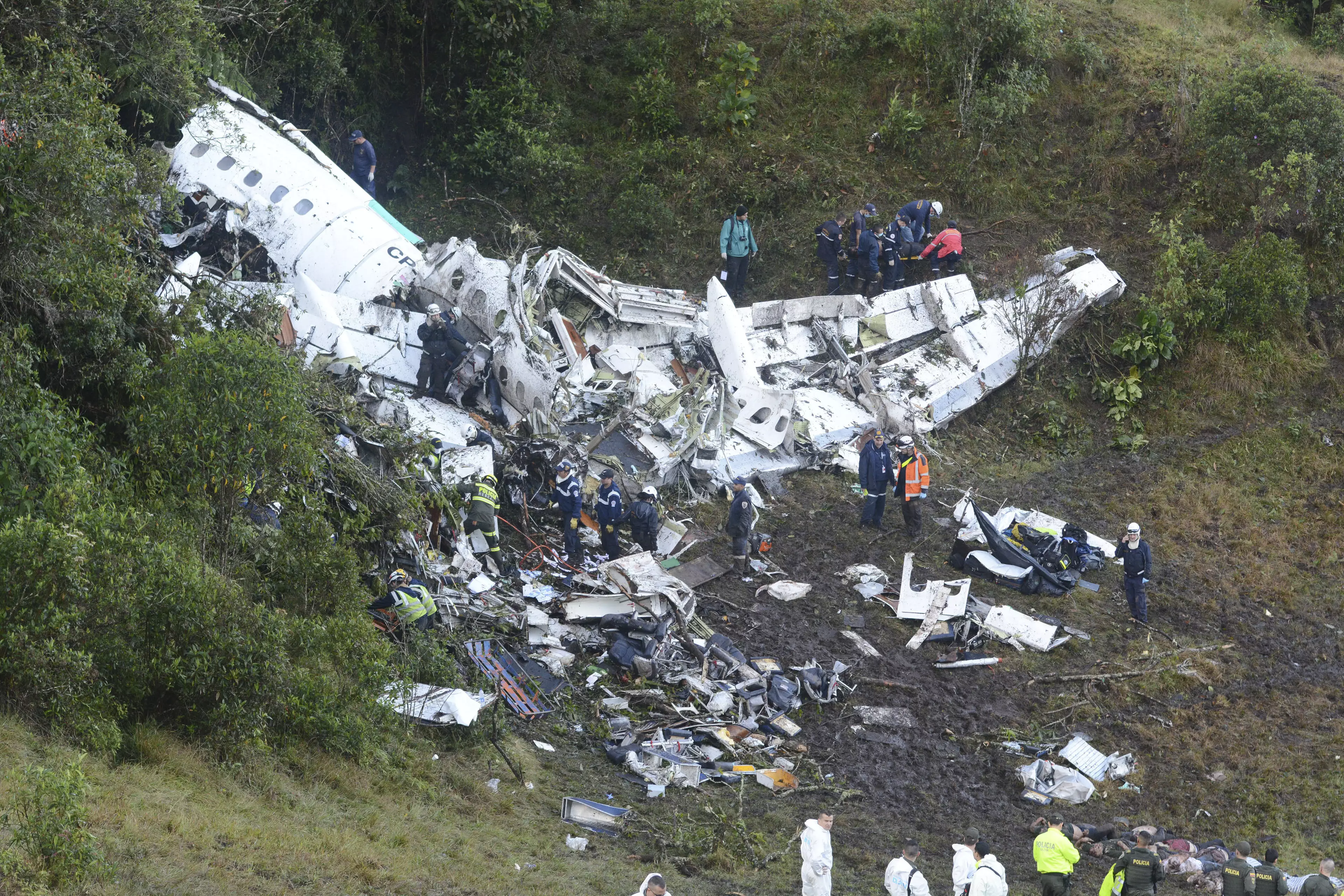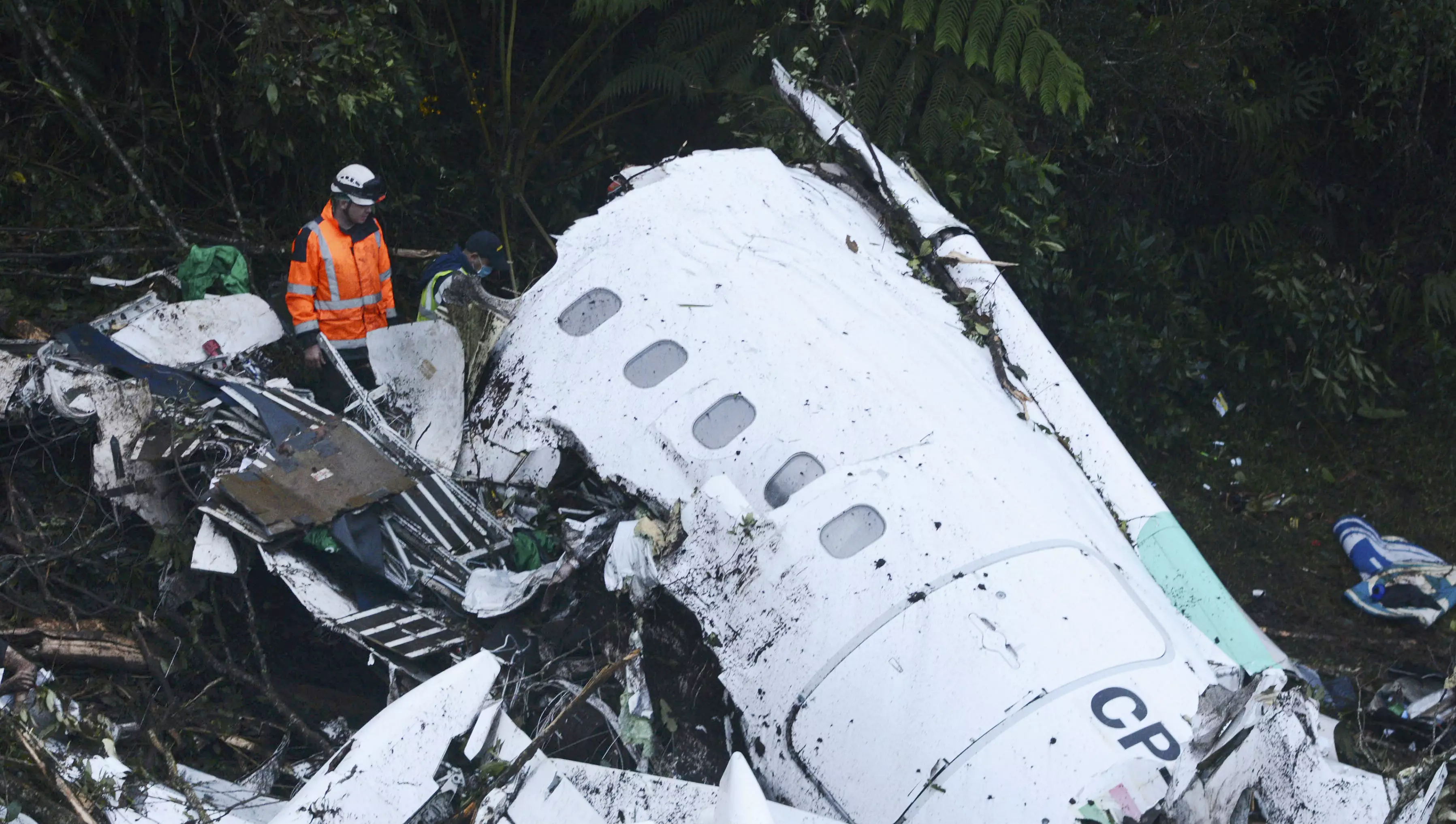
The football world is in mourning after the tragic crash of LaMia Airlines Flight 2933, carrying Brazilian first division club AC Chapecoense (ACF), in the early hours of Tuesday morning. The aeroplane, which was en route to the Copa Sudamericana final first leg between ACF and Atletico Nacional, had taken off in Bolivia and had completed almost all of the journey to its destination in Medellin, Colombia when it ran into difficulties and crashed into Cerro Gordo, a mountain outside of the city. Shortly before the crash, the crew of Flight 2933 had reported electrical difficulties. Three days of national mourning were declared in Brazil as a result.
The death toll as of the time of writing stands at 76, including almost the entire Chapecoense squad and management team. Initial reports claimed that six of the 81 passengers had survived, although that was revised down as goalkeeper Danilo later died of his injuries. ACF were en route to the biggest moment in their history, the first leg of the final of the Copa Sudamericana, South America's equivalent of the Europa League, having undertaken a meteoric rise from the depths of exclusion from the fourth division a decade ago to having recently celebrated their highest ever league finish in Brazil's top tier.
Danilo Padilha was filmed shortly before the crash with Alan Ruschel; Credit: Instagram
Advert
Associação Chapecoense de Futebol, formed in 1973 as a merger of two amateur teams in the southern Brazilian city of Chapeco, had previously enjoyed a relatively uneventful history. While they stood out in their state of Santa Catarina, winning the state championship on five occasions (including the most recent competition), they had rarely made any impact on the national stage. Their nadir was in 2008 when they failed to qualify for the fourth division of national competition, placing them well outside the country's top 100 professional clubs. Since then, they have embarked on a campaign of successive promotions that has taken them as high as ninth in Serie A and had secured continental competition for three years in succession.
On top of that, their campaign in the 2016 Copa Sudamericana had led them to the final, including the notable scalps of San Lorenzo and Independiente, two of Argentina's so-called Big Five clubs. They were due to face Atletico Nacional, Colombia's most successful club. While they were not expected to win, their rise to the top table of South American football with relatively modest means and a squad with few stars had led to inevitable comparisons to Leicester City in England. This was a comparison which their manager, Caio Junior, was only too happy to encourage, having been quoted as saying: "Our team really reminds me of Leicester, a team from an unfancied city that was able to win an important title". Indeed, those unfamiliar with the Brazilian domestic leagues will in all likelihood have been unable to name any of their players, with only captain Cleber Santana, once of Atletico Madrid and Real Mallorca, having any real reputation in Europe.

Credit: PA Images
Advert
The Copa Sudamericana itself is the equivalent to UEFA's Europa League, the second tier of continental competition. While it is not as prestigious as the world-renowned Copa Libertadores, it represented the greatest moment in the history of a club the size of Chapecoense and an achievement of which they were rightly proud. The celebrations that followed their semi-final success pay testament to that. The Sudamericana, however, is still fraught with many of the dangers that once blighted European club competition, as well as the problems of South American geography. The distances between the Venezuelan clubs of the north and the Chilean and Argentinian clubs of the south are staggering, the equivalent of the distance between the UK and Afghanistan. The altitude, too, can present real issues for travelling teams, as fixtures in Bolivia, Ecuador and Colombia can be played at heights of over 3,500m above sea level. When you factor in the enthusiastic local crowds, home advantage can play a huge factor in results.
Chapecoense had been celebrating reaching the final; Credit Chapecoense
Advert
Those travelling distances are also far more dangerous than those found in Europe or the United States. Journeys regularly involve flying directly over the Andes mountains or the Amazon rainforest, where weather extremes are far harsher and chances of rescue in the event of an accident far less likely. Of the most deadly aviation incidents involving sports teams, among the most notable are the Alianza Lima air crash of 1987, the Viloco tragedy of 1967 featuring Bolivian giants The Strongest and, most notably, the 1972 Andes flight disaster that included a Uruguayan rugby union team and was immortalised in the film Alive.
The story of Chapecoense is as exceptional within Brazilian football as the events of this morning are tragic. While it is too early to speculate on the details of the accident, it is clear that football has already come together to honour those killed aboard Flight 2933, with the likes of FC Barcelona, Manchester United and Real Madrid already tweeting their solidarity and support and #ForcaChape trending worldwide. Doubtless in the coming days, as more details emerge from the crash site in Colombia, we will learn more about the final moments of the Chapecoense team; let us not forget the glory that they experienced on the field of play before this tragic incident.
Words by Mike Meehall Wood
Advert
Featured Image Credit: PA Images
Featured Image Credit:
Topics: Football, Chapecoense